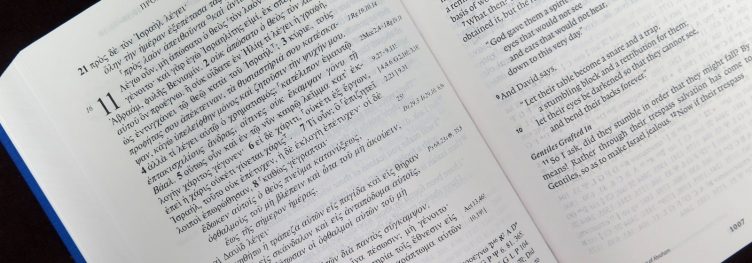The print editions of the Nestle-Aland Greek texts include a lot of helpful information that most electronic editions in Bible software do not include (it is available via Accordance). Students with print editions may need to be reminded of this, too, as it easy to forget, not least when first learning to navigate these critical editions.
I managed to neglect the introduction (to the UBS4) when I started my first year Greek course a little over a decade ago. How?! This was the first thing I read when the NA28 landed on my doorstep in late 2012, and it was quite helpful to orient me to changes/new features of the 28th edition.
If you have not read the introduction to your Greek text for a while—and certainly if never!—do it. Students, pastors, and scholars alike would do well to re-visit the intro year by year.
And those appendices—so much information is packed into these final pages. Important information about the manuscripts used in the edition, readings of minor variants, a list of citations and allusions the NT makes of earlier texts, and a more complete section on abbreviations.
Here is one example of how I use an appendix. I am reading through the LXX of Isaiah (for research I am doing in Luke), so I keep Appendix III—Loci Citati vel Allegati (Passages cited or alluded)—open, to observe where the editors believe the Gospels and Acts cite or allude to the passage in Isaiah I am reading.
For more on how to use the NA28, one could consider David Trobisch’s User’s Guide (though Dirk’s review makes me hesitate to recommend it). I have not used it myself and don’t plan to. But by all means, start with the introduction.

[…] Joshua L. Mann, Nestle-Aland Greek Texts: Use the Appendices […]
[…] In short, you will not find a more searchable, usable NA28 module on another software platform. And importantly, the Accordance version essentially includes everything the print edition has, including the introductions and appendices (I’ve written on the importance of the appendices elsewhere). […]